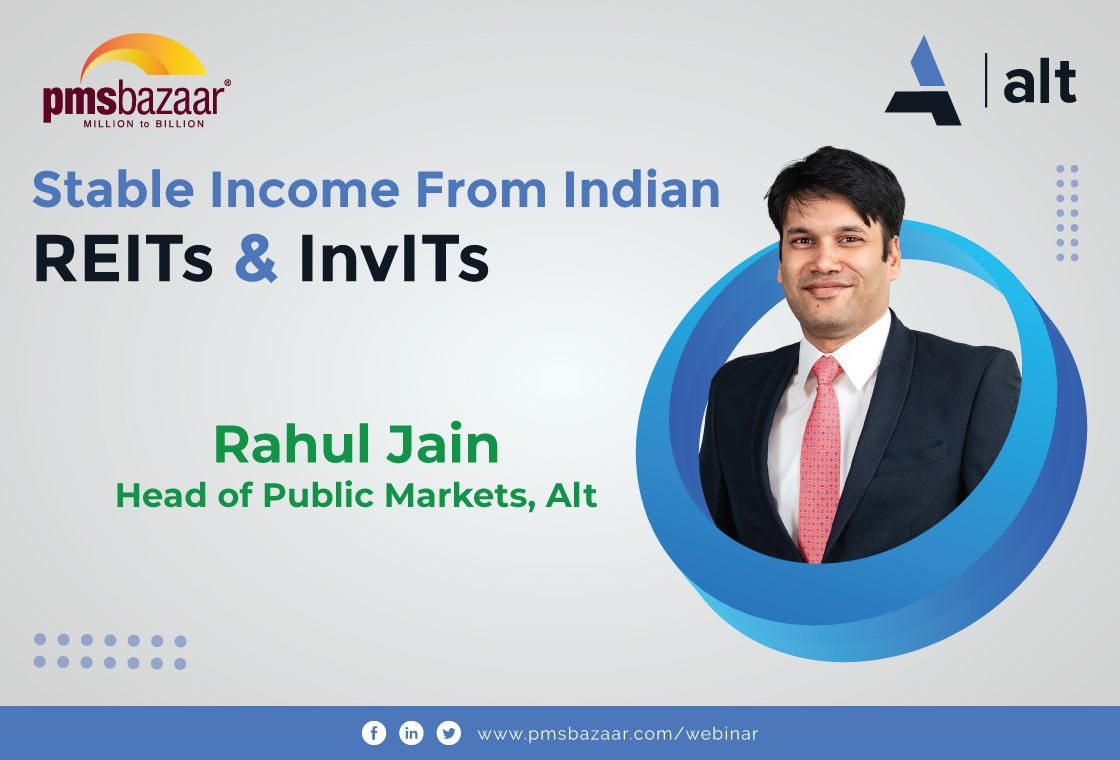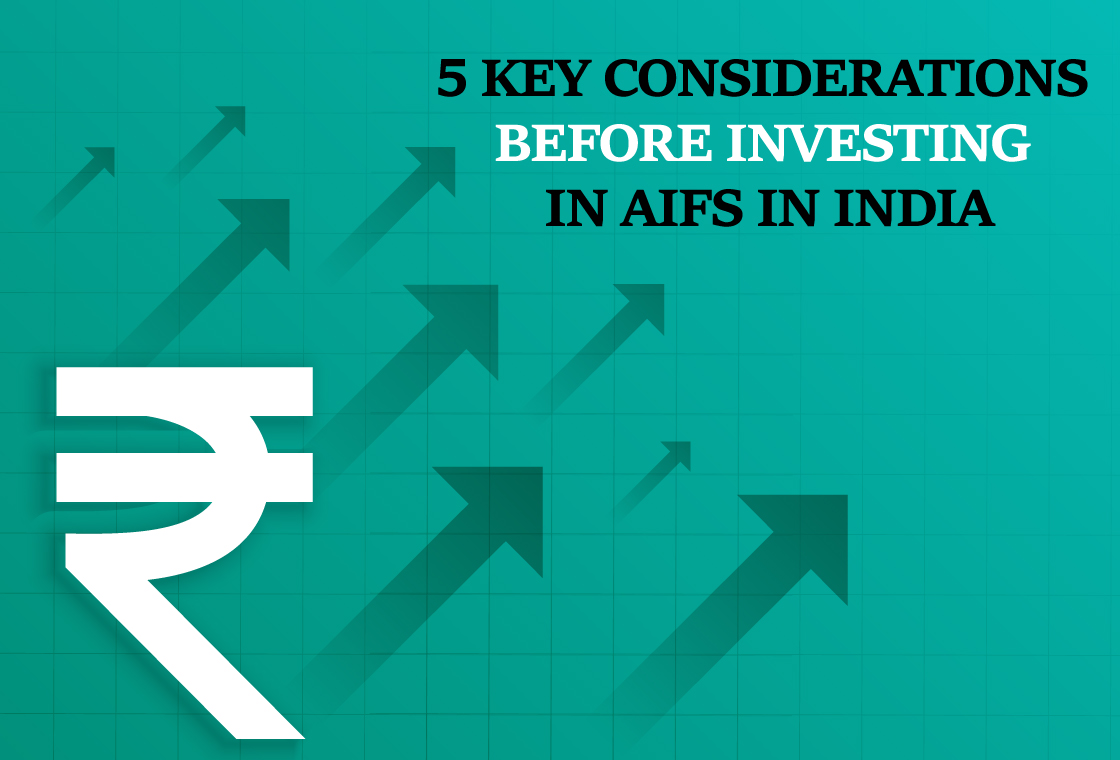Despite the trying time because of geopolitical tensions and the rise in inflation, experts are positive about the growth opportunities in the Indian Market. The recent IMF report has projected India as the fastest-growing major economy in the world and this adds credibility to the positive attitude of experts towards the Indian Market. “But, there are some opportunities, particularly around disruptions and emerging trends, which you won’t have access to if you are Investing only in India,” says Mr. Mihir Shirgaonkar, Fund Manager- Global PMS, Phillip Capital. According to him, to gain from disruptions and emerging trends outside India, Investors should diversify their portfolios with Global Investments.
.jpg)
This blog covers the in-depth insights shared by Mr. Mihir Shirgaonkar at our webinar on the topic: “Invest Globally into Disruptive Themes & for $ Diversification” PMS Bazaar conducts informative webinars every week to empower investors and intermediaries with quality knowledge from experts.
Get updates about our upcoming webinars and events by subscribing to us: Subscribe HERE
Opportunities outside India:
If we observe the returns of country-specific indices in the past decade, we can see that a major chunk of returns is from the US Market. Especially in the latter half of the decade (2016-2021), we can see that Indices like NASDAQ, and S&P 500, have delivered phenomenal returns.
Here is a table comprising returns yielded by major benchmarks, over the last decade, across the world:

The reason that can be attributed to the phenomenal performance of the US market in the last decade is that the market has rewarded the sectors that are into technology and disruptions. So, with major tech giants, healthcare giants, and many disruptive theme-based companies, the US market was able to produce amazing results in the last decade. Though the recent correction of Dove jones and S&P Indices creates a negative image around the US market, we must look into the long-term performance to understand the opportunities better.
Apart from the US market & Chinese, the two major countries under the radar of investors, some countries are gaining from the emerging trends. To quote a few examples – Chile, a South American country, is recently getting opportunities and attention as it serves the Electric Vehicle revolution-induced demand for lithium with its large volumes of lithium reserves. We can also find Kazakhstan on the news due to its Nuclear Reserves that serve the movement towards nuclear energy.
Today investors have many ways to invest outside the Indian market. The ETFs now enable investors to access 50-60 countries. Even the listed equities route offers exposure to multiple countries.
Post pandemic business landscape & opportunities:
The pandemic has changed the way many businesses operate. Companies are now exploring ways to incorporate the Work From Home (WFH) model permanently, with pandemic-fueled digital disruption. According to reports, some companies even preponed the digital disruptions which were originally planned for 2025-2026. So, despite the disadvantages brought by the pandemic, some of the businesses particularly around technology have been disrupted forever and according to Mr. Mihir, “that is a positive kind of a change which the pandemic has brought about”
Here are some specific Innovations across different Industries:
Technology: Artificial Intelligence (AI), Robotics, Internet of Things (IoT)
Healthcare: Neurotechnology, Genomic revolution, Medical Devices
Financial services: Cryptocurrency & Blockchain, Decentralized finance (Defi)
Manufacturing: 3-D Printing
Climate change: EV, Renewable energy
According to Mr. Mihir Shirgaonkar, Investors cannot invest in these technological disruptions directly if they invest only in the home market.
Mitigation of Risk by investing in multiple countries:
According to Mr. Mihir, investing in multiple countries can mitigate the risk for investors. Take the case of Russia, where war-imposed sanctions have affected Russia-focused ETFs in the United States market. Most of these ETFs got corrected up to 80 %, with some ETFs even stopped trading.
In the case of China, the recent Holding Foreign Companies Accountable Act is forcing chine companies listed in the American market to comply with the regulatory changes. Already, 5 Chinese companies were warned of getting de-listed in 2024 if they are not complying with the regulatory changes. This created ripples in the Chinese market, bringing down the performance of China-based ETFs.
By the two examples mentioned above, it is evident that investing in multiple countries can indeed mitigate single country exposure risk.
International Portfolio Solutions offered by Philip Capital:
To tap the untapped potential outside the Indian market, the Philip Capital offers the following strategies to the Investors:
1. Philip International Pioneer Portfolio:
This strategy Invests in Sectors, Themes, and Geographies that are poised to grow over the medium to long term. With their in-house thematic classification, they are tracking 60+ themes ranging from Semi-conductors, Artificial Intelligence to pet care and work-from-home. This enables them to identify and invest in disruptive themes across the globe.
The primary allocation of this strategy is to Equity Instruments. But it also has the flexibility to invest in new & emerging asset classes that has favorable risk to reward ratios like Cryptocurrencies, Carbon credit, and SPAC. Etc.
2. Philip International Universal Portfolio
This is a multi-asset strategy that invests in multiple asset classes, Geographies, and Sectors with an emphasis on diversifying capital across various asset classes and instruments with different risk characteristics. This strategy creates an Overall Diversified Exposure across Instruments with Varying Risk Characteristics.
The Primary allocation of this strategy is to the Equity and Fixed Income Instruments, with the flexibility to invest in other favorable asset classes like REIT, Commodity, and currency.
According to Mr. Mihir Shirgaonkar, both the strategies mentioned above showed promising CAGR and performed better than indices in the Backtesting for the last 6 years.
The GIFT city route:
Philip capital is using the GIFT (Gujarat International Fin-Tec) city route for its International portfolio solutions. Through this route, they offer only dollar-denominated portfolios by investing only in the US-listed securities. Since the funds in the GIFT city are also dollar-denominated, they were able to avoid currency risk. Also, they were able to create seamless execution because they were able to create accounts and transfer funds through gift city in the dollar denomination and allocate it to global investments.
The GIFT city is regulated by IFSCA, a unified regulator governing all the businesses in the GIFT city. The recent IFSCA (Fund Management) Regulations 2022 have provided separate guidelines for GIFT city. So, there is no SEBI jurisdiction in GIFT city. With proactive regulators ensuring the best practices, the GIFT city route helps to scale up the Financial services under it.
Mr. Mihir Shirgaonkar covered all the above-mentioned topics in-depth and answered some questions from the audience towards the end of the session. Watch the recording of this insightful session through the appended link below:
Get access to rich data and analytics of PMS & AIF by subscribing to us. Join the 35000+ investors & experts now: Subscribe NOW
Recent Blogs
.jpg)
Passively Active Investing — A Modern Investor’s Lens on ETF-Based PMS
PMS Bazaar recently organized a webinar titled “Passively Active Investing — A Modern Investor’s Lens on ETF-Based PMS,” which featured Mr. Karan Bhatia, Co-Founder and Co-Fund Manager , Pricebridge Honeycomb ETF PMs. This blog covers the important points shared in this insightful webinar.

Spot the Trouble: Red Flags in Equity Investment Analysis
PMS Bazaar recently organized a webinar titled “Spot the Trouble: Red Flags in Equity Investment Analysis,” which featured Mr. Arpit Shah, Co-Founder & Director, Care Portfolio Managers. This blog covers the important points shared in this insightful webinar.

Long-Only AIFs Rebound Sharply in October; Long-Short Strategies Lag Despite Lower Volatility
106 long-only AIFs averaged 3.68% vs 32 long-short AIFs at 2.7%; only 24–31% of funds beat key indices

Markets log strongest monthly gains in 7 months; PMS performance turns near-uniform in October
Nifty 50 TRI gained 4.62%, BSE 500 TRI rose 4.27%; 415 of 427 equity PMSes ended positive

How SMEs are Shaping India’s Investment Landscape?
PMS Bazaar recently organized a webinar titled “How SMEs are Shaping India’s Investment Landscape?” which featured Mr. Shrikant Goyal, Fund Manager, GetFive Opportunity Fund.

Stable Income from Indian REITs and InvITs
PMS Bazaar recently organized a webinar titled “Stable Income from Indian REITs and InvITs,” which featured Mr. Rahul Jain, Head of Public Markets, Alt.

5 Key Considerations Before Investing in AIFs in India
Alternative Investment Funds (AIFs) have emerged as a compelling option for sophisticated investors seeking diversification and potentially superior returns. But venturing into AIFs requires a clear understanding of their unique characteristics that go beyond simply knowing what they are and their categories.

How AIF can help in diversification?
Traditionally, Indian investors have relied on a mix of stocks and bonds to build their wealth. While this approach offers diversification, it can still leave your portfolio vulnerable to market fluctuations. Enter Alternative Investment Funds (AIFs), a dynamic asset class gaining traction for its ability to unlock diversification beyond the realm of conventional options.

